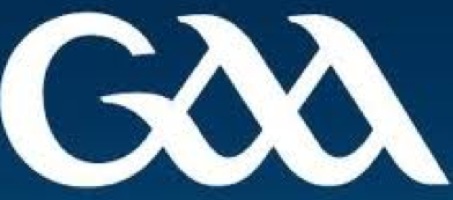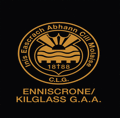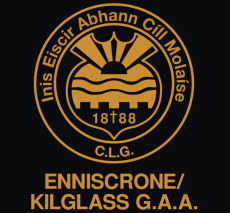 History of our Club By Cathal Mullaney
History of our Club By Cathal Mullaney
Evidence of GAA activity is first recorded in our area in the year of 1888, some four years after the establishment of the Gaelic Athletic Association (GAA) in Thurles, Co Tipperary. The Enniscrone club was represented at the Sligo county convention in November of that year by PJ Hopkins, while J Queenan represented the club at a meeting earlier in 1888.
In the early years, Enniscrone sported the blue and white colours and adopted the name Enniscrone Owen Roes owing to a directive from Central Council that each club had a distinctive name. The first recorded fixture involving Enniscrone was against Easkey in Easkey on January 27th, 1889.
The first formal committee of the club was appointed in November of that year. Those elected were:
President – Wallace Hopkins
Secretary – MJ O’Dowd
Committee – MJ Blake, T Carroll, P McGowan, E Caffrey, A Mullaney, R Gray.
Captain – John McKeon
Vice-captain: M Coggins
Others recorded as having an involvement in an administrative capacity in the formative years included J O’Dowd, Francis Rouse and John Kennedy.
There is little record of games during the first 15 or so years of the club. This is because, in part at least, of the fact that the Sligo Senior Football Championship did not take place between the years of 1893 and 1904. Challenge games, however, against relatively local opposition from west Sligo and north Mayo are understood to have taken place at various levels of frequency during these years.
Indeed, midway through the first decade of the new century, Sligo GAA’s 125 year history states that the Enniscrone club applied to the county board to play in Mayo, as opposed to Sligo, due to the significant travel required for the club to play in Sligo. The request was declined.
Ironically, as a golden era dawned for football in the parish at the new decade approached, there is evidence at that time of three outfits in the parish: the Kilglass ‘Lads in Green’, ‘Enniscrone Owen Roes’ and Enniscrone ‘Mariners’.
While it is unclear whether all united again or not, success was in the offing. Enniscrone Owen Roes first appeared in a county senior final in 1913 when they lost to Sligo Wanderers in Sligo by a single point, 1-3 to 1-2.
The following year, though, silverware would arrive. Owen Roes had the distinction of becoming the first club from Tireragh to win the Sligo senior title after they beat Ballymote following a replay. The reasons for the replay are unclear – Enniscrone had lost the first game by a point, 1-2 to 1-1 – and no score is recorded for the second fixture.
Relinquishing their title in 1915, Owen Roes were back on their pedestal in 1916 when they won their second crown, overcoming the challenge of Doocastle after a replay. The first game had finished in a draw, 0-1 apiece; Enniscrone were 1-3 to 0-2 winners in the replay, an encounter in which they enjoyed home advantage.
Also in this period, Enniscrone scored a notable success when they defeated the Mayo standard bearers Ballina Stephenites in the final of the Fr Tully tournament played in a field close to where the Diamond Coast Hotel and Marella Houses now stand in Bartragh. Ballina had won 13 consecutive Mayo championships from 1904 to 1916.
Through oral stories, it appears that Enniscrone Owen Roes ceased to exist after 1919.
The reason for this, we’re told, was an incident which occurred in a tournament final at Bartragh against Moylough. Owen Roes’ Eddie Tighe, a member of the Sligo team at the time, was in possession and destined to score a goal having rounded the Moylough players and the goalkeeper, when a Moylough priest stepped into the goalmouth and stopped the ball with his opened umbrella. Expressing their dissatisfaction with this injustice, Enniscrone Owen Roes handed all their gear into Fr Tully and failed to reappear for a couple of years.
Return they would, however, and join up with their fellow parishioners Kilglass in the 1920s. This was another golden era, in which another senior title came back to the parish in 1929 when Kilglass beat Tubbercurry by 3-3 to 0-3 in the Sligo final, played in Pullaheeney in the spring of 1930. Kilglass would reach two more finals, but lost out to Tubbercurry (1930) and Knockalassa (1933). The latter match went unfinished, but the final score reads Knockalassa 0-7 Kilglass 0-1, with Kilglass receiving a six-month suspension for failing to complete the encounter. The colours worn by Kilglass are recorded as being ‘Black and Gold’.
The suspension had a big impact – Kilglass amalgamated with the ‘Sea Blues’ in 1934, but there is no record of their involvement. The suspension was later lifted. 1934 also saw a Camogie team from Enniscrone take to the field, but with little success. Michael John Kavanagh, one of the top players in the country at that time, was chosen as Sligo captain in 1934; he was the only Sligo representative on the Connacht Railway Cup team.
The next notable success came in 1948, when the club won the Sligo Junior Championship for the first time (that being the second tier competition). In the final at Collooney, Kilglass had ten points to spare over Grange on a final scoreline of 3-5 to 0-4.
During the 1940s and into the 1950s, there is evidence of a club having formed in the Culleens end of the parish. Indeed, Culleens are noted as having contested the 1951 Sligo minor football final, where they lost by a single point to Teeling.
The year previously, records show that Enniscrone won the minor title for the first time courtesy of a final win over Craobh Rua. Though a major success, and one which would suggest a good crop of players were on the way through, the following 15 years would be challenging.
Football appears to have endured a difficult period from the early 1950s, and stagnation was evident for the next decade. Activity was limited, and by 1963 and 64, football was almost dead in the area.
The seeds were sown for the modern incarnation of the club, however, when Archdeacon Wiliam Moyles called a meeting for a reorganisation of the club in the Town Hall on February 1st, 1965. Erins Own was the initial name adopted, though this later changed to Enniscrone/Kilglass. One of those who kept GAA alive in the area in the lean 1950s and 1960s, James Cawley of Bartragh, was elected as secretary.
The influence of Joe McManus was also significant during this period, the Cavan native having served as Garda Sergeant in Enniscrone for many, many years. He, along with many others, helped strengthen the club and build for the modern era.
Indeed, in 1965 the club was embroiled in a dispute over the conclusion of that year’s county minor final. The records read that Enniscrone lost to Collooney by a point, 4-4 to 3-6, but a clear Enniscrone point during the game was not correctly flagged. In the end, both Collooney and Enniscrone received winners medals.
With a renewed spirit at adult level, Enniscrone claimed the 1966 Junior title with a final defeat of Ballisoadare in Tubbercurry on a scoreline of 2-8 to 0-5.
The promotion to senior saw the club return to the top table, and become a powerhouse once again. Most regrettably, this period with a team sprinkled with high profile players did not yield a senior championship. Despite having the Caffrey brothers, Liam and Aidan, as well as future All-Star Barnes Murphy, Enniscrone came up short in the senior final of 1972 when they lost out to Curry by 1-10 to 0-5.
The 1970s, however, was a productive period at underage level. The club claimed two U-16 titles – in 1973 and 1979 – while the minor victory of 1975, with a win over Shamrock Gaels in the final at Corran Park in Ballymote, is still fondly remembered.
In 1983, the club opened its new playing field at Quigabar. Having previously played at Bartragh and then in Reesie Kilcullen’s field close to the site of Scoil Chriost Rí in Enniscrone, the new club grounds were among the best in the county. Sligo, captained by PJ Kavanagh, played the reigning All-Ireland champions Offaly to mark the occasion. By the start of the next decade, a highly modern dressing room complex was also added.
On the playing fields, the club operated at Intermediate level through the 1980s, before championship success arrived in 1991. Having claimed the U-21 title the year previously for the first time following a final win over Castleconnor in Easkey, Enniscrone/Kilglass overcame a youthful Drumcliffe/Rosses Point side in the Intermediate final played in Kilcoyne Park, Tubbercurry, in August 1991. The club also won Intermediate league titles in 1986, 1988 and 1996.
The club has been at Intermediate level since 2000, though there were further underage successes at ‘A’ level in 2002 (U-12) and 2004 (U-14), as well as dozens of titles over the years at other grades.
In 2004, a redeveloped club ground was unveiled, which included a rearranged dressing room complex with four dressing rooms and associated facilities, as well as two new spectator stands, terracing and fencing. Sligo played Fermanagh, All-Ireland semi-finalists later that year, to mark the occasion.
The club’s facilities were further enhanced some 12 years later, when construction began on a unique indoor astro-turf complex. The new building became operational in early 2017, and includes an astro-turf playing area, a meeting room, kitchen, dressing room and toilet facilities. It is one of only a handful in the country.
A Mothers and Others group was established in 2017 and has become a vibrant part of the club. Eoghan Rua, our local ladies club, and Western Gaels, our local hurling club, both use our facilities as their home ground.


